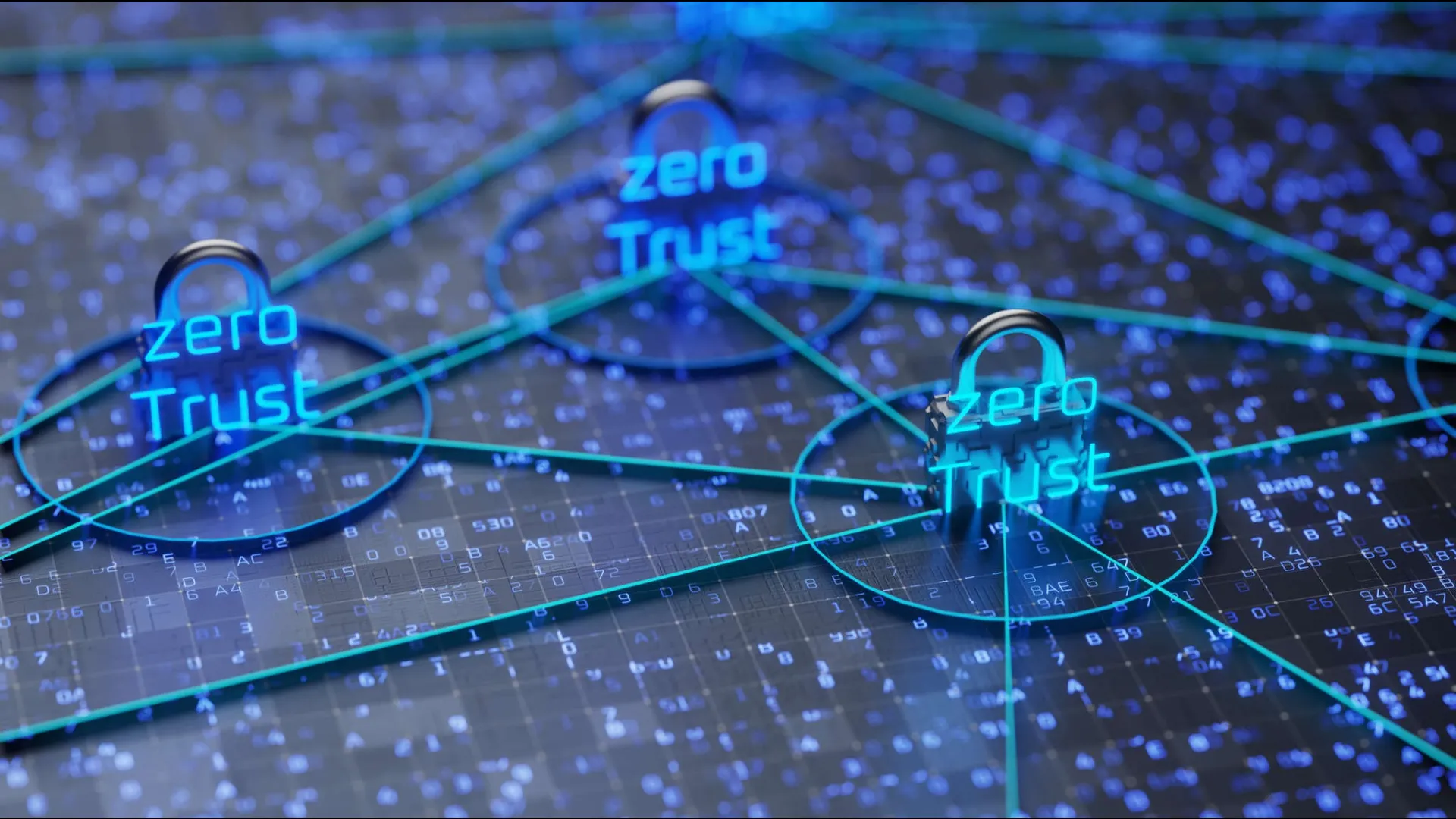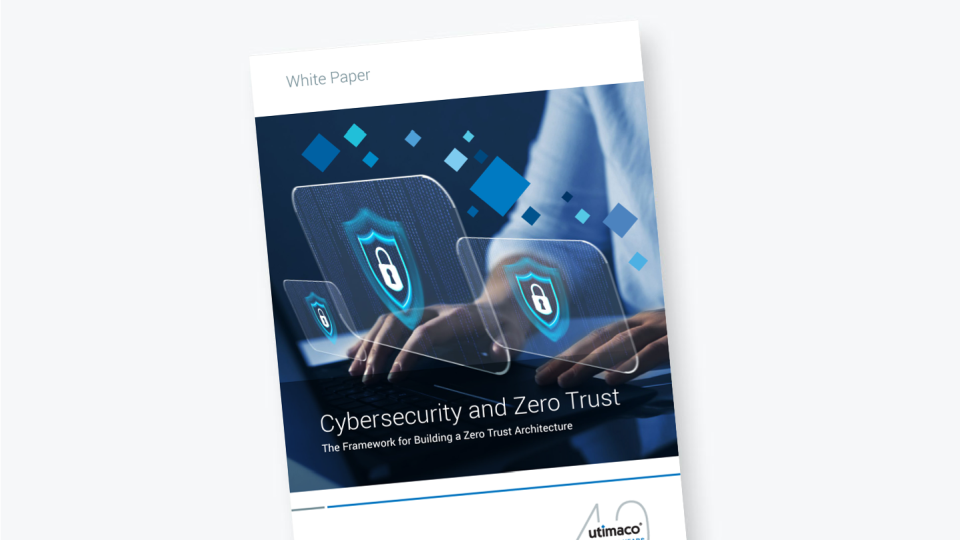Security is of the utmost importance in today’s interconnected digital world.
With threats rapidly evolving, traditional security models are proving inadequate to safeguard sensitive data and critical assets. Enter the Zero Trust Maturity Model – a roadmap for organizations to fortify their defenses and embrace a proactive approach to security.
Get more in-depth insights into the importance of following a Zero Trust approach
What is the Zero Trust Maturity Model?
The Zero Trust Maturity Model, developed by the Cybersecurity & Infrastructure Security Agency (CISA), serves as a comprehensive guide for organizations transitioning towards a Zero Trust architecture. Initially tailored for federal agencies, this model enables entities to embrace Zero Trust principles effectively, fortifying the defense of sensitive assets.
Version 1.0 of the model was released in September 2021, in response to President Biden's executive order on cybersecurity. An enhanced iteration followed in April 2023, introducing a fourth maturity stage and furnishing supplementary insights to streamline Zero Trust implementation.
So, what does the Zero Trust Maturity Model entail?
The Zero Trust Maturity Model is built upon the foundation of continuous verification and strict access controls. It encompasses a journey of organizational transformation, guiding entities through distinct stages of security maturity:
- Initial/Ad Hoc: Organizations at this stage possess rudimentary security measures, albeit reactive in nature. They're yet to fully embrace Zero Trust principles but recognize the need for heightened security.
- Defined: Here, the organization begins to lay the groundwork for Zero Trust. Policies and controls are defined, and initial implementation efforts are underway. Segmentation of the network and basic access controls may be in place.
- Managed: Zero Trust policies and controls become actively managed and monitored. Advanced technologies such as micro-segmentation and multi-factor authentication are employed to bolster security defenses.
- Measured: In this stage, metrics and key performance indicators (KPIs) are established to gauge the effectiveness of the Zero Trust implementation. Continuous improvement processes are enacted based on these insights.
- Optimized: At the pinnacle of the maturity model, Zero Trust principles are deeply ingrained in the organization's culture, processes, and technologies. Security becomes a collaborative effort, with a relentless focus on adaptability and resilience in the face of evolving threats.
At its core, Zero Trust challenges the traditional notion of trust within network architectures. It operates under the assumption that threats can originate from both external and internal sources, rendering the concept of a trusted perimeter obsolete. Instead, Zero Trust advocates for continuous verification and strict access controls, irrespective of the user's location or device.
The Levels of a Zero Trust Maturity Model
The model reflects the seven tenets of the Zero Trust framework, as established by the NIST:
1. All data sources and computing services are considered resources
Within network infrastructures, an array of devices, applications, and resources intertwine, each potentially holding access to valuable enterprise assets. Consequently, it's imperative to view these components as potential vulnerabilities.
2. All communication is secured regardless of network location
Trust cannot be assumed solely based on physical location. Access should not be granted automatically simply because a device is within the confines of the enterprise network. Every access request, irrespective of its origin, must adhere to uniform security standards.
3. Access to individual enterprise resources is granted on a per-session basis
Past trust does not guarantee future reliability. Merely because a device was deemed trustworthy in a previous session does not warrant blind faith in subsequent interactions. Authentication must occur with each session to ensure ongoing validation of the user's identity.
4. Access to resources is determined by a dynamic policy
Authorization decisions ought to factor in external cues, encompassing a user's geographical location, device characteristics, and the real-time context of their application usage.
5. The enterprise monitors and measures the integrity and security posture of all owned and associated assets
Within the Zero Trust framework, no device or asset is granted implicit trust. Each request initiates a rigorous security posture evaluation, while assets undergo continuous monitoring to guarantee they remain up-to-date, secure, and untainted by compromise.
6. All resource authentication and authorization are dynamic and strictly enforced before access is allowed
Trust is a dynamic process, continuously evaluated based on a multitude of factors before any enforcement decision is made.
7. The enterprise collects as much information as possible about the current state of assets, network infrastructure, and communications and uses it to improve its security posture
Gathering analytics and insights regarding assets empowers better decision-making, helping to steer clear of potentially risky approvals.
These tenets lay the groundwork for an effective Zero Trust Architecture (ZTA) and are essential to achieving Zero Trust maturity. As we dive into the model in more detail, it’s best to keep these principles in mind.
The Pillars of a Zero Trust Maturity Model
In addition to the levels mentioned above, the Zero Trust Maturity Model is supported by several key pillars. They serve as guiding frameworks to establish robust defenses and proactive security measures:
- Identity and Access Management (IAM): Verifying and validating the identities of users, devices, and applications before granting access to resources.
- Network Segmentation: Dividing the network into smaller, isolated segments to contain potential breaches and limit lateral movement by attackers.
- Continuous Monitoring and Analytics: Monitoring network traffic, user behavior, and system activity to detect and respond to threats in real-time.
- Data Security: Protecting sensitive data assets through encryption, data loss prevention (DLP), and access controls based on data classification.
- Endpoint Security: Securing endpoints through measures such as endpoint detection and response (EDR) and vulnerability management.
- Policy Enforcement and Automation: Defining and enforcing granular access controls and security policies based on Zero Trust principles, with a focus on automation for consistent enforcement.
- User Education and Awareness: Educating users about security best practices and promoting a security-conscious culture within the organization.
Benefits and Challenges of Zero Trust
Implementing Zero Trust offers numerous benefits for organizations looking to enhance their cybersecurity posture. However, it also comes with its set of challenges that organizations need to address effectively. Let's explore both the benefits and challenges:
Benefits of Zero Trust:
- Enhanced Security Posture: By continuously advancing through the maturity levels and implementing Zero Trust principles, organizations can significantly improve their security posture and better protect their assets against a wide range of cyber threats
- Adaptability and Resilience: Zero Trust encourages a proactive approach to security, allowing organizations to adapt to evolving threats and quickly respond to security incidents, thereby enhancing resilience in the face of cyberattacks
- Compliance and Regulatory Alignment: Implementing Zero Trust principles can help organizations achieve compliance with various industry regulations and cybersecurity frameworks, such as GDPR, HIPAA, and PCI DSS, by strengthening security controls and protecting sensitive data.
Challenges of Zero Trust:
- Complexity and Implementation Costs: Implementing Zero Trust requires significant planning, resources, and investment in technologies such as identity and access management, network segmentation, and continuous monitoring. The complexity of integrating these components and the associated costs can pose challenges for organizations, particularly those with limited resources or legacy infrastructure
- User Experience and Productivity: Zero Trust may introduce additional authentication and access control measures, which can potentially impact user experience and productivity. Striking the right balance between security and usability is essential to ensure that security measures do not hinder legitimate business activities
- Organizational Culture and Change Management: Adopting a Zero Trust mindset requires a cultural shift within the organization, with an emphasis on security awareness, collaboration, and accountability. Resistance to change and lack of buy-in from stakeholders can hinder the successful implementation of Zero Trust principles.
Despite these challenges, the benefits of Zero Trust far outweigh the obstacles, making it a valuable framework for organizations seeking to enhance their cybersecurity posture in an increasingly complex threat landscape.
Successful Implementation of the Zero Trust Maturity Model
By embracing Zero Trust principles and navigating through the maturity stages, organizations can fortify their defenses, mitigate risks, and safeguard their most valuable assets.
However, it's essential to acknowledge the challenges and proactively address them to ensure successful implementation. When implementing Zero Trust, organizations should consider best practices such as thorough risk assessments, clear communication and collaboration among stakeholders, phased implementation approach, and ongoing monitoring and evaluation of security controls.
Are you ready to embark on the path to Zero Trust?
As you embark on your Zero Trust journey, remember that it's not just about reaching a destination but continually evolving and adapting to stay ahead of emerging threats.
Utimaco provides Zero Trust solutions that enable organizations to implement robust security measures, safeguard sensitive data, and protect against evolving cyber threats. With our comprehensive portfolio of solutions and expertise in cybersecurity, we empower organizations to embrace Zero Trust principles and achieve a mature security posture.
Learn more about our Zero Trust solutions and how we can help your organization navigate the path to enhanced security and resilience.







